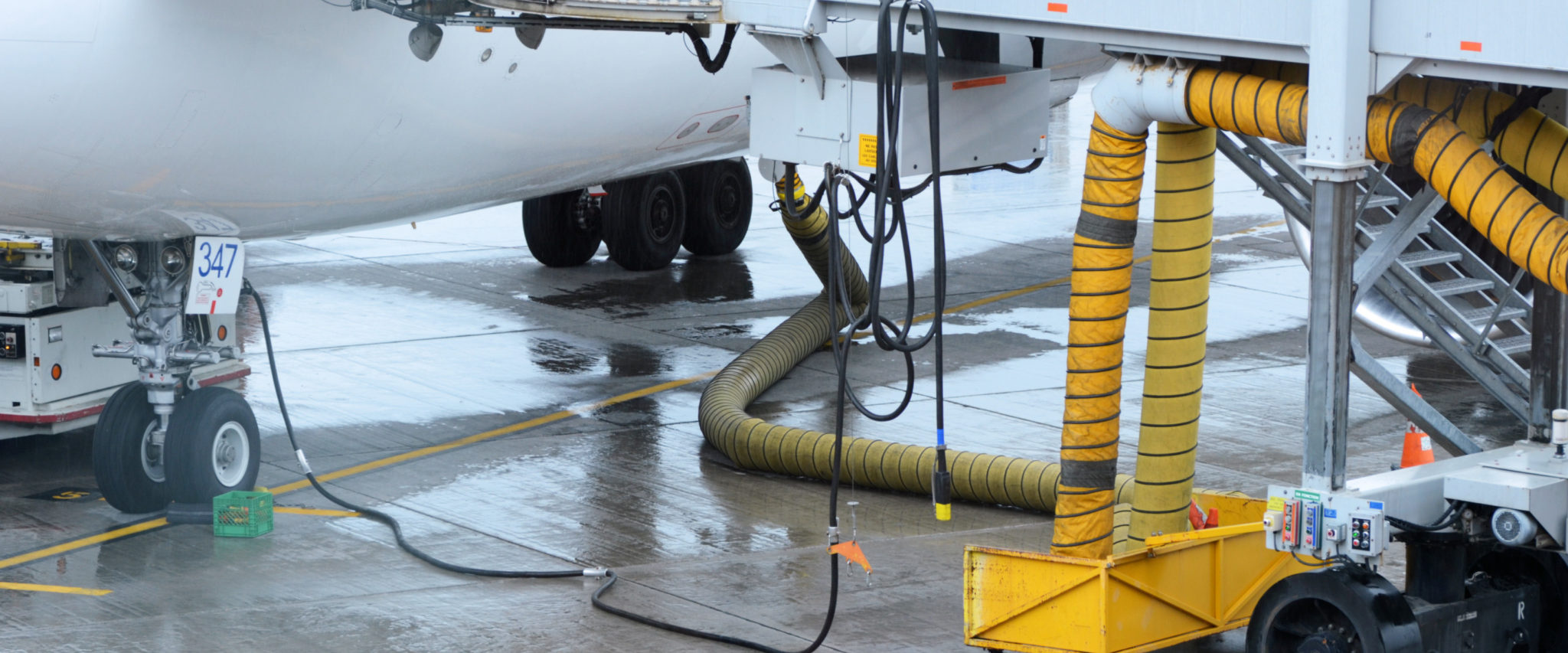ACRP Releases Research Report 207, Optimizing the Use of Electric Preconditioned Air (PCA) and Ground Power Systems for Airports
01.28.2020 | HMMH |Airports strive to reduce air emissions of criteria pollutants and greenhouse gases by assessing both direct (airport-owned) and indirect (non-airport-owned) emissions sources to identify improvement opportunities. Airports directly control emissions sources, such as airport-owned vehicle fleets and generators, and they own indirect emissions produced from electricity consumption of their buildings and facilities, as well as corporate travel. While controlling and monitoring these activities can result in emissions savings, airports still do not control the largest source of both criteria pollutant and greenhouse gas emissions, which are aircraft.
Airports can take measures to help aircraft operators reduce emissions while on the ground through the installation of gate electrification systems. Electric pre-conditioned air and ground power systems allow aircraft to meet power needs from airport-provided electricity instead of their jet-fuel powered auxiliary power units (APU) while parked at the gates. Gate electrification systems include both electric ground power and pre-conditioned air (PCA). Optimizing the use of gate electrification equipment decreases aircraft APU use which results in reduced emissions of criteria air pollutants and greenhouse gases, in addition to cost savings from reduced fuel use and avoided APU maintenance.
In recognition of the benefits of gate electrification systems, the Transportation Research Board’s (TRB) Airport Cooperative Research Program (ACRP) launched a study of the utilization of systems in 2017. The objective of the study was to identify challenges and barriers to optimal utilization of gate electrification equipment and the solutions to address these challenges.
ACRP recently published the results of the study in ACRP Research Report 207 – Optimizing the Use of Electric Preconditioned Air (PCA) and Ground Power Systems for Airports on November 4, 2019. This report, authored by HMMH with contributions from J. M. Crites LLC and Barrett Energy Resources Group, allows the reader to identify and better understand factors that contribute to the use or non-use of gate electrification systems at airports and suggested remedies.
The report includes a self-assessment checklist which serves as a high-level screening tool for stakeholders to identify challenges, determine their impact, and prioritize solutions. In addition, a simple utilization tracking methodology provides industry stakeholders with an approach to calculating, monitoring, and reporting on gate electrification utilization by using commonly available data and considering the time and budget restraints of airport personnel.
Based on research and outreach with industry stakeholders, including airports, airlines, pilots, and equipment manufacturers, ACRP Research Report 207 identifies three primary research findings:
1. Collaboration between airports and airlines is essential to identify and address the challenges to gate electrification system utilization. Improved utilization will benefit both parties when emissions reductions and savings on fuel and maintenance costs are realized.
2. Airports have an opportunity to more systematically track gate electrification system utilization. The Utilization Tracking Methodology serves as a simple tool to enable airports to easily estimate utilization rates of their gate electrification equipment and, therefore, to more accurately identify causes of non-use and appropriate solutions.
3. Communication between stakeholders is key to solving challenges. Many solutions identified in ACRP Research Report 207 do not require significant investment in new technology or equipment but they do require an investment of time and collaboration between stakeholders. For example, airports typically provide and maintain the gate electrification equipment while the airlines operate it. Therefore, a cooperative approach is required to successfully address many of the challenges listed in the report and improve system utilization rates.
The full report can be found here.





